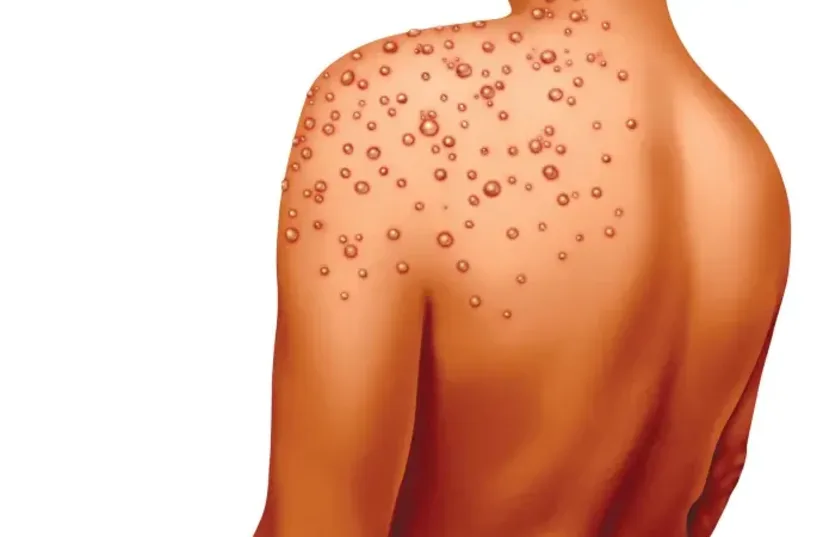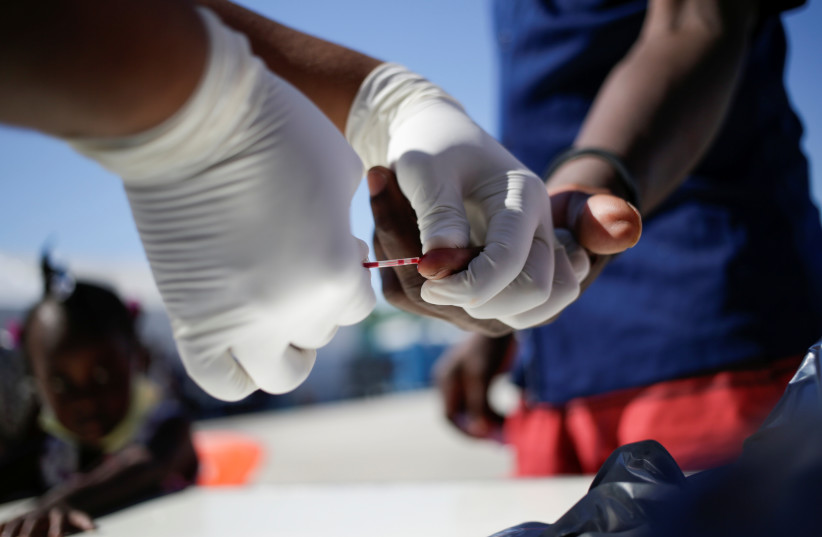How do you get syphilis?
The disease is transmitted by direct contact with the sores it causes, which are located on the sexual organs, such as the rectum. Lesions may also appear around or on the lips on the face.
Unprotected sex is the primary way of contracting syphilis. But fetuses can also contract the infection from their pregnant parents. HIV-positive people, further, are five times more prone to falling ill to syphilis, due to a low immune system. Individuals who have suffered from other sex-related diseases are much more susceptible to syphilis as well.
Syphilis symptoms and stages of the infection
The disease progresses through three stages. In the primary one, which occurs 10 to 90 days after infection, single or multiple sores (chancre) appear at the site where the bacteria infiltrated. These lesions are hard, round, and painless. If left untreated, the infection advances to the next stage.
During the second stage, a rash appears on the skin and on the mucous membranes. This rash is typically not itchy and may develop in the same area where the initial sores healed. It manifests as red, non-itchy spots on the palms of the hands, soles of the feet, or other parts of the body.
Occasionally, the rash may be faint and difficult to detect. Other symptoms such as fever, swollen lymph nodes, a sore throat, hair loss, headaches, weight loss, muscle aches, and fatigue may also occur. The signs and symptoms of syphilis may come and go, but without treatment, the disease progresses to its final stage.
The third and last stage occurs after the disappearance of the initial sores. If left untreated, the infected person continues to harbor the disease, which can eventually cause damage to various organs, including the nervous system, eyes, heart, blood vessels, liver, bones, joints, and even the brain. Organ damage can occur years after the initial infection and may lead to paralysis, loss of sensation, blindness, and dementia. In severe cases, it can result in death.
How is syphilis diagnosed?
Syphilis is diagnosed through a blood test that detects the presence of antibodies against the disease. Since this illness is very dangerous for infants, it is recommended that pregnant women take this test for early detection.
What is the treatment for syphilis?
Treatment for syphilis involves administering one to three injections of penicillin antibiotics, depending on the stage of the infection. In extreme cases, the medication is delivered via intravenous.
What to remember
Syphilis is a serious disease that requires prompt diagnosis and treatment. Regular testing is recommended for all women to prevent harm to themselves and their unborn babies. Administering the appropriate antibiotics, such as penicillin, can effectively treat the disease at various stages.

